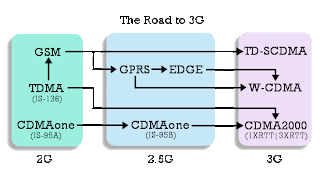The Marriage - History
During the time of Roman Empire (17 B.C.- A.D. 476) the lower classes who became Christians later had common law or free marriages. The father would deliver the bride and the agreement of the two was called a consensus to wed. Then eventually as Christianity spread the church interpreted a "free" marriage as a conscience marriage. This agreement meant that each partner was to keep the marriage vows and the marriage intact.
There were Romans who were very wealthy who would sign documents consisting of listing property rights and letting all know that they wanted this union to be legalized and not to be thought of as a common law marriage. Thus this began the official recording of marriages as we do today. Roman men could dissolve the marriage any time as it was a male privilege, not one accorded to females.
In A.D. 527-565 during the rein of Justinian lawyers drew up laws called the Justinian Code and this was a regulation of their daily life including marriage. Up until the time of the Justinian Code just saying you were married was enough.
Until the ninth century marriages were not church involved. Up until the twelfth century there were blessings and prayers during the ceremony and the couple would offer their own prayers. Then priests asked that an agreement be made in their presence. Then religion was added to the ceremony.
English weddings in the thirteenth century among the upper class became religious events but the church only blessed the marriage and did not want a legal commitment. In 1563 the Council of Trent required that Catholic marriages be celebrated at a Catholic church by a priest and before two witnesses. By the eighteenth century the wedding was a religious event in all countries of Europe.
In Colonial times in North America the customs of the old countries were followed. There were some who only wanted a civil ceremony and not a religious ceremony. The Colonists who wanted civil marriages passed laws to this effect.
Civil magistrates would perform marriage ceremonies and they would even include prayers in the ceremony.
Viriginia was a colony that stayed with the customs of the church and did not permit anyone to have a civil marriage ceremony as they followed the Church of England. By the end of the eighteenth century both religious and civil marriage ceremonies were legal in American.
In European countries today, civil marriage ceremonies are legal as in America. Even in England, the couple can choose to have either a religious or civil ceremony.
There were Romans who were very wealthy who would sign documents consisting of listing property rights and letting all know that they wanted this union to be legalized and not to be thought of as a common law marriage. Thus this began the official recording of marriages as we do today. Roman men could dissolve the marriage any time as it was a male privilege, not one accorded to females.
In A.D. 527-565 during the rein of Justinian lawyers drew up laws called the Justinian Code and this was a regulation of their daily life including marriage. Up until the time of the Justinian Code just saying you were married was enough.
Until the ninth century marriages were not church involved. Up until the twelfth century there were blessings and prayers during the ceremony and the couple would offer their own prayers. Then priests asked that an agreement be made in their presence. Then religion was added to the ceremony.
English weddings in the thirteenth century among the upper class became religious events but the church only blessed the marriage and did not want a legal commitment. In 1563 the Council of Trent required that Catholic marriages be celebrated at a Catholic church by a priest and before two witnesses. By the eighteenth century the wedding was a religious event in all countries of Europe.
In Colonial times in North America the customs of the old countries were followed. There were some who only wanted a civil ceremony and not a religious ceremony. The Colonists who wanted civil marriages passed laws to this effect.
Civil magistrates would perform marriage ceremonies and they would even include prayers in the ceremony.
Viriginia was a colony that stayed with the customs of the church and did not permit anyone to have a civil marriage ceremony as they followed the Church of England. By the end of the eighteenth century both religious and civil marriage ceremonies were legal in American.
In European countries today, civil marriage ceremonies are legal as in America. Even in England, the couple can choose to have either a religious or civil ceremony.






